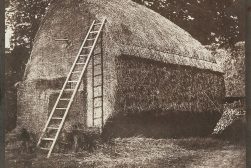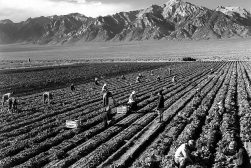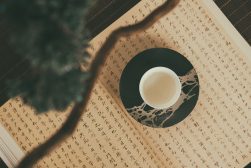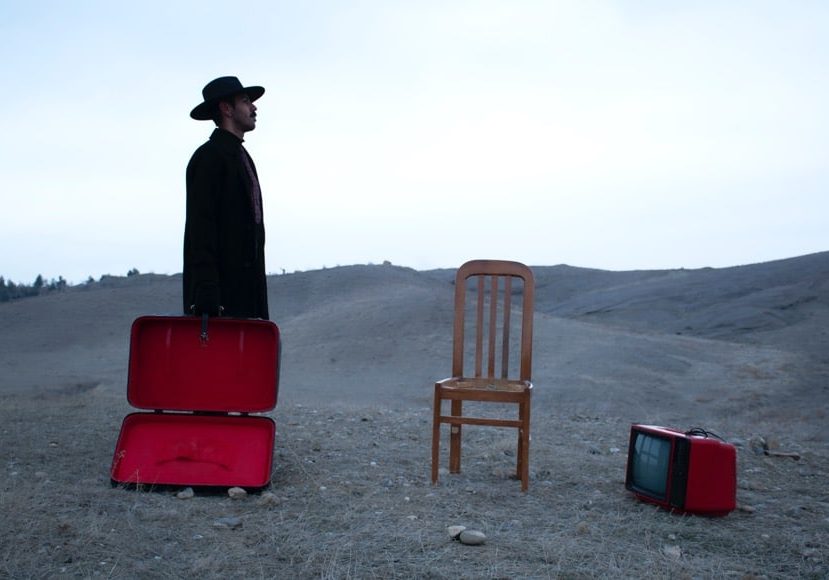
Guide to Fine Art Photography
What exactly is fine art photography? How are photographers able to make a living selling fine art prints? Read this guide for answers & inspiring examples.
Learn | Photography Guides | By Ana Mireles
Do you want to become a fine art photographer? Then you’re in the right place.
This article doesn’t intend to offer the definitive answer to what art is, nor will it give you the technical skills to make art. Instead, this is a practical guide that will introduce you to what art photographers do.
Here you’ll find a brief introduction to what type of photographs are considered fine art, the steps to follow to get you on the way to becoming a fine art photographer, and plenty of examples to get you inspired.
If you feel as pumped as we do, let’s get started!
What is Fine Art Photography?
It’s the type of photography that aims to make art. I know it sounds like a very obvious thing, but actually, trying to define art is a complicated task. Theorists and artists have debated this concept for centuries, so I won’t try to sum it up in a few lines – which would probably leave you with more doubts than certainties.
Instead, I’ll try to answer the question, what do fine art photographers do? With this, I’ll attempt to give you some concrete guidelines to get you started.
Fine art photographers use this medium to express their ideas, emotions and vision of the world. The subject matter is subordinated to the concept.
That’s why there are fine art photographers who photograph landscapes, still life, or even abstract photography.
To put this in a concrete example: a portrait photographer makes portraits, while an author of fine art portraiture uses portraits to express him or herself.
Fine art photography prints are normally numbered and signed. That’s because they have a limited edition and the signature warranties authenticity.
Another characteristic of fine art photography is that the author has more liberty than other photographers, even when doing commissioned work.
A commercial or editorial photographer follows the client’s brief or layout – he or she has to interpret the client’s idea. On the other hand, a fine art photographer develops a personal concept.
At most, they follow a topic that guides a collective exhibition or a photo contest. Then, they do their own take on it – they have free rein over the overall content and aesthetics.
If you want to be a fine art photographer, keep in mind that there are two sides to it. It’s one thing that you call your works fine art photos and another that they are recognized as such.
The first part might be subjective, but the second part follows more objective rules guided by critics, galleries, museums, theorists, etc. To make a living out of fine art images, you need to consider this part as well.
How to Become a Fine Art Photographer

Predator. Velizar Ivanov
Making fine art photography is not about a muse or a crazy artist – like many people think. It’s hard work that has a lot of structure – this is true to any art form. As Picasso once said: “Inspiration exists, but it has to find you working.”
- Decide on your subject
Fine art photography is not necessarily about a beautiful subject. It’s about an idea and a concept that the author wants to undertake. Find something that interests you – even better, something that you’re passionate about – and work with it.
- Do your research
This is an important part that shouldn’t be overlooked if you want to be successful. Fine art photography doesn’t treat topics superficially. It needs to make people reflect and feel – that’s how it communicates a unique point of view.
Research how other photographers have treated the subject, take inspiration from other arts (like literature), think about ten ways of doing it before you even start shooting. There isn’t one way to do it. Every author has their own process.
- Plan your shots
This is the preparation stage that will make the next step easier. Decide how you want to take your photos, which light you’re going to use. If you need props, decide which ones and research where can you get them.
Once you have everything, organize your photo shoot.
How Much Do You REALLY Know About Photography?! 🤔
Test your photography knowledge with this quick quiz!
See how much you really know about photography...

- Take the photographs
The idea is just the base of the project, and now it has to be produced. This can take several attempts before it comes out exactly as you want it. Don’t give up – it’s part of the process.
- Post-process your images
Fine art photographers need to control the entire process until the final result of their images. Post-processing is the digital equivalent of developing and printing in film photography; it’s an important part of the work.
- Choose & Cull
Deciding which photos to present and the order you present them is essential in fine art photography. Imagine you’re taking the viewer on a journey or that you’re telling them a story.
- Write the presentation text
Unlike other types of photography, your work needs to be presented. Don’t explain the obvious. Instead, give an insight about what moved you to do this work and what you’re reflecting upon. Think about the last time you visited a museum or a gallery: they always have a text at the entrance, and probably more throughout the exhibit.
- Prepare your artist statement
Many confuse this text with a short bio or a type of CV – that’s not what it means. An artist statement should explain what you do and why. It’s not about one project; instead, it’s the common thread that guides all your projects. It doesn’t need to be too long.
- Show your portfolio
Now that you have your project ready, you’ll want to have it exhibited, shown and even bought. Start visiting galleries or enter photo-contests to get your work out there. Your artist statement should always accompany your portfolio.
Inspirational Examples of Fine Art Photography
The best way to get inspired is by looking at some fine art photos. Here are some examples to get you started.
Fine Art Portrait Photography
Ronen Goldman has developed a surreal style in his portraits. This way of photographing can be recognized both in his fine art series and his commissioned commercial work.
In fine art photography, the most important thing is vision and style. That’s why Goldman considers the human brain to be the most important piece of equipment inside his camera bag.
He aims to “breathe life into concepts and externalize emotions” with surreal images. He has worked for over ten years on a personal project called The Surrealistic Pillow to perfect this.
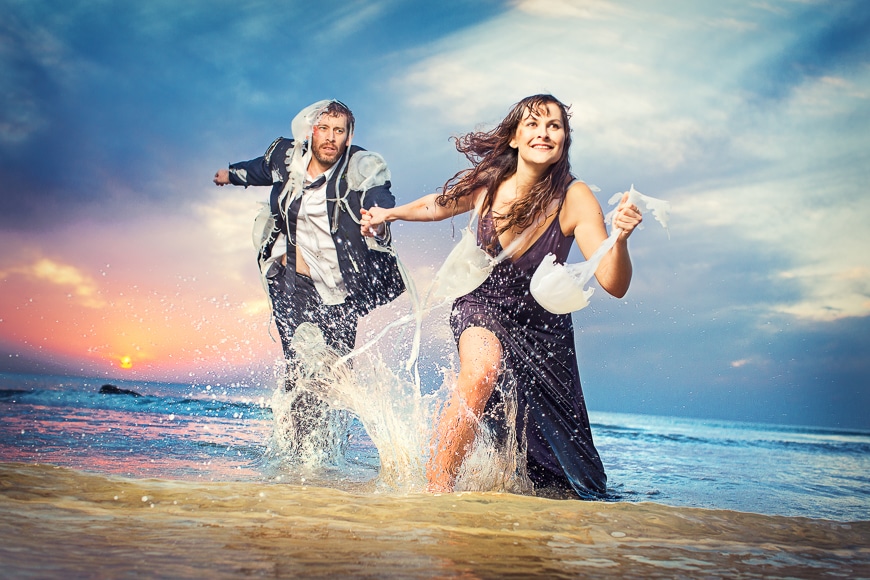
Making it out alive © Ronen Goldman, courtesy of the artist.
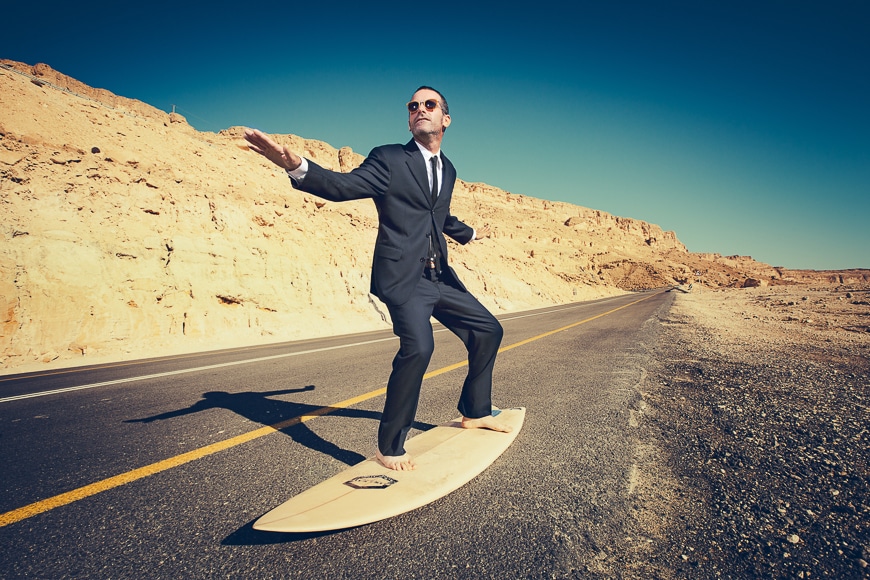
My Groove Is Back, From Long Vacation © Ronen Goldman, courtesy of the artist.
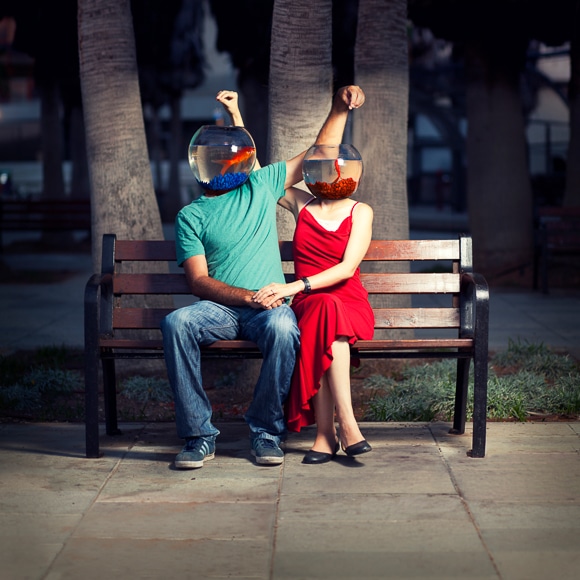
We Were Meant for Each Other © Ronen Goldman, courtesy of the artist.
Fine Art Landscape Photography
Laura Pritchett is a visual artist that uses painting, drawing and photography to experiment and render her ideas. She does personal projects and commissioned commercial works that allow her to mix both mediums.
She loves to travel because new settings push her to get a new perspective. One of her latest projects was done while driving a caravan across the US. She documented the places she and her family passed through or camped at.
She has an ongoing series entitled Wind Sculpture, where she captures fabric in motion. Her work has been exhibited in the US and Europe, and Tinker Street now represents her.
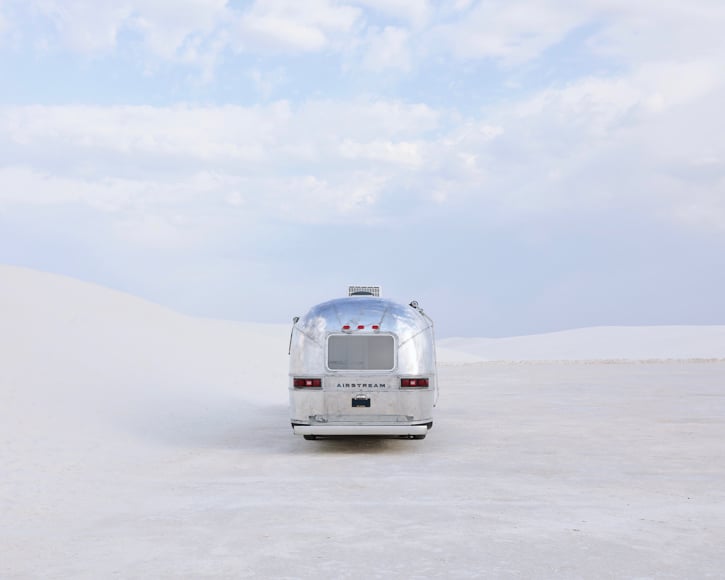
© Laura Pritchett, courtesy of the artist.
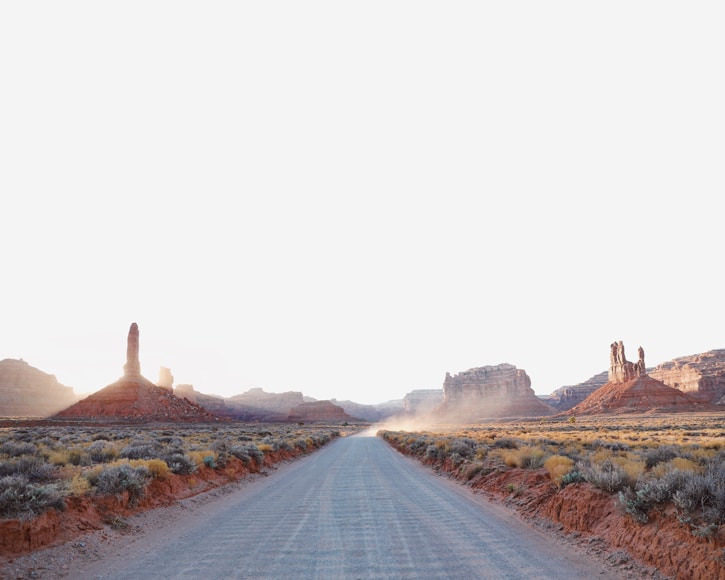
© Laura Pritchett, courtesy of the artist.
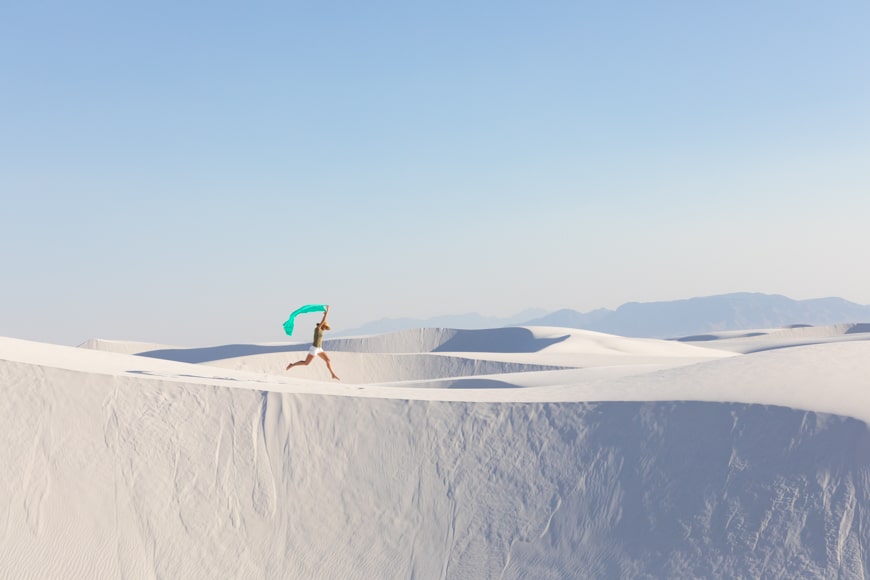
Wind Sculpture © Laura Pritchett, courtesy of the artist.

Wind Sculpture © Laura Pritchett, courtesy of the artist.
Fine Art Fantasy Photography
Fantasy photography is a subgenre of surreal photography. Through photo-composites, the artists turn the real world into one that seems taken out straight out of a book.
A wonderful fine art photographer and digital artist is Katrina Yu. As her personal project, she makes self-portraits in imaginary worlds. By doing this, she told Shotkit, “I create the realities I want to experience”.
For her commercial work, she uses the same creative process to develop unique imagery for the brands that work with her. Some of them are Adobe Creative Live, Club Med and Crocs.

© Katrina Yu, courtesy of the artist.
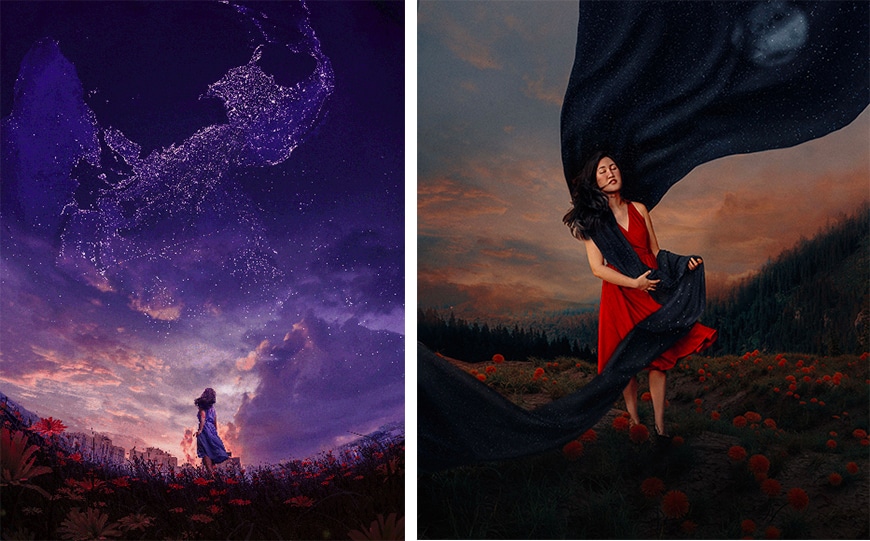
© Katrina Yu, courtesy of the artist.

© Katrina Yu, courtesy of the artist.
Fine Art Mood Photography
Hengki Lee is a visual artist who defines his work as fine art mood photography – which is to say that what sparks his work is “curiosity, dream, poetry and emotion”.
He wants his work to be different from the mainstream images, as he believes that’s where he finds beauty. As for the creative process, he always starts with the vision. Everything else, from models to location, will adapt to the original idea.
His advice to anyone who wants to create fine art photography is: Just be yourself.

Unspoken Thoughts © Hengki Lee, courtesy of the artist.

Unspoken Thoughts © Hengki Lee, courtesy of the artist.
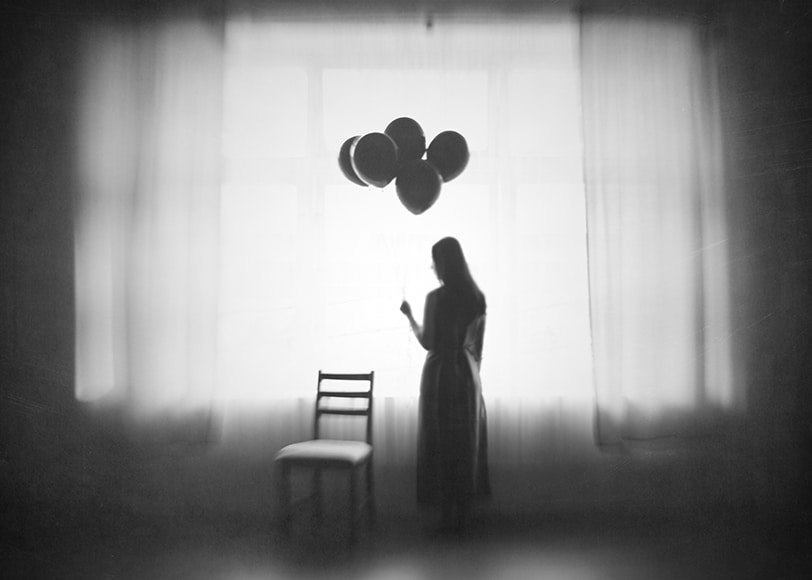
Unspoken Thoughts © Hengki Lee, courtesy of the artist.

Unspoken Thoughts © Hengki Lee, courtesy of the artist.
Fine Art Conceptual Photography
Zelco Nedic is a visual artist who connects his consciousness with the subject to create powerful images full of mystery and beauty.
He believes that there is one perfect moment when everything comes together for an image to be created. He likes “pondering the uncharted territory of what might be considered the abnormal side of the moment”.
To create his fine art photographs, he works with an antique photography technique called wet-collodion. He sometimes adds painting as well. Post-processing is a very important part of his workflow.
His images are full of symbolism that the viewers need to contemplate for a long time until they go deeper to find the hidden story.

Untitled #1, Golden Scars © Zelko Nedic, courtesy of the artist.
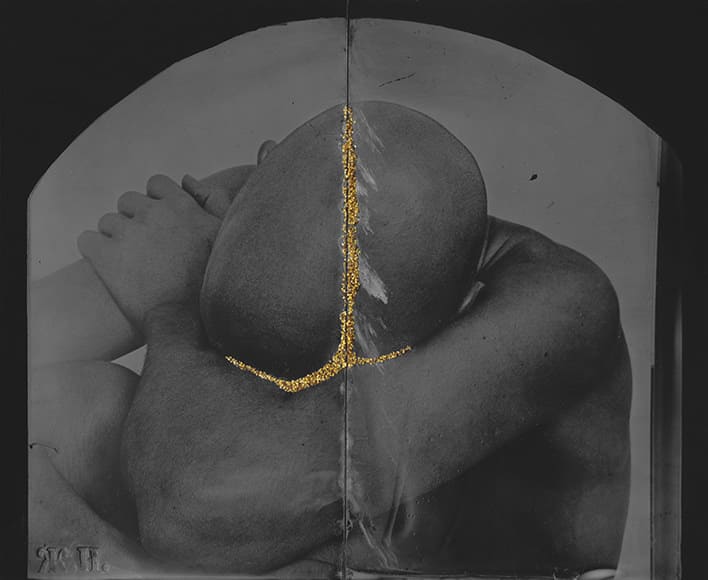
Untitled #2, Golden Scars © Zelko Nedic, courtesy of the artist.
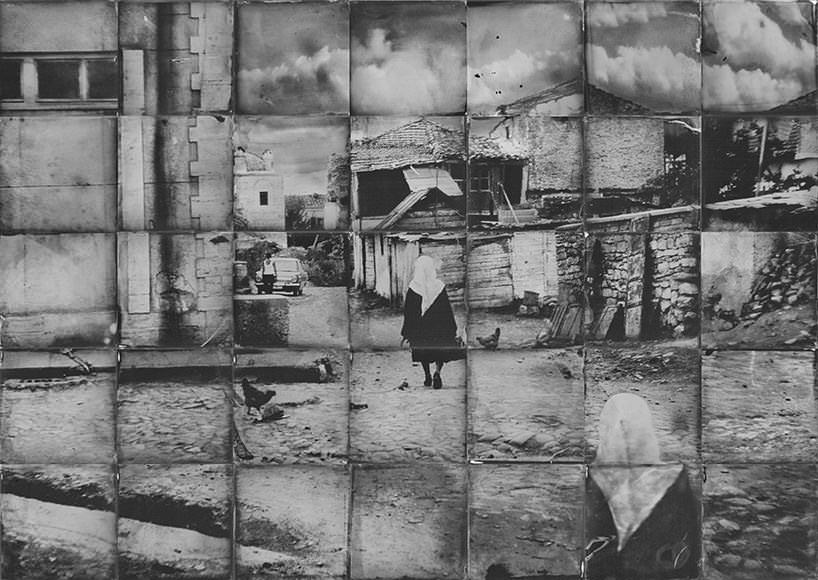
Untitled #7, Underneath © Zelko Nedic, courtesy of the artist.
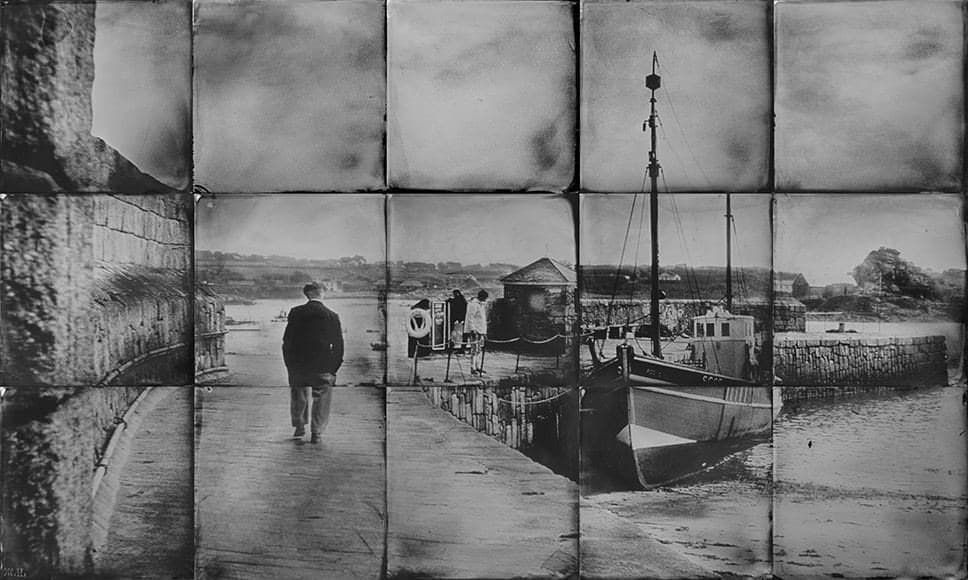
Untitled #1, Underneath © Zelko Nedic, courtesy of the artist.
Fine Art Photography as Artistic Research
I’m Ana Mireles, and I use photography and post-photography to research the concepts of identity, traces and perception.
Artistic research is a discipline that aims to create knowledge through the artistic process. As such, it goes hand in hand with scientific or academic research, it’s transdisciplinary, and it’s often exhibited as unfinished work.
For example, my series Dreams’ Jail goes hand in hand with a paper I wrote called The Wall of Silence: The Word vs the Symbol.
Another project called Kaleidoscopic Self was developed together with my master’s thesis entitled Snapping, Sharing…Being: Digital Online Photography and Identity Construction.
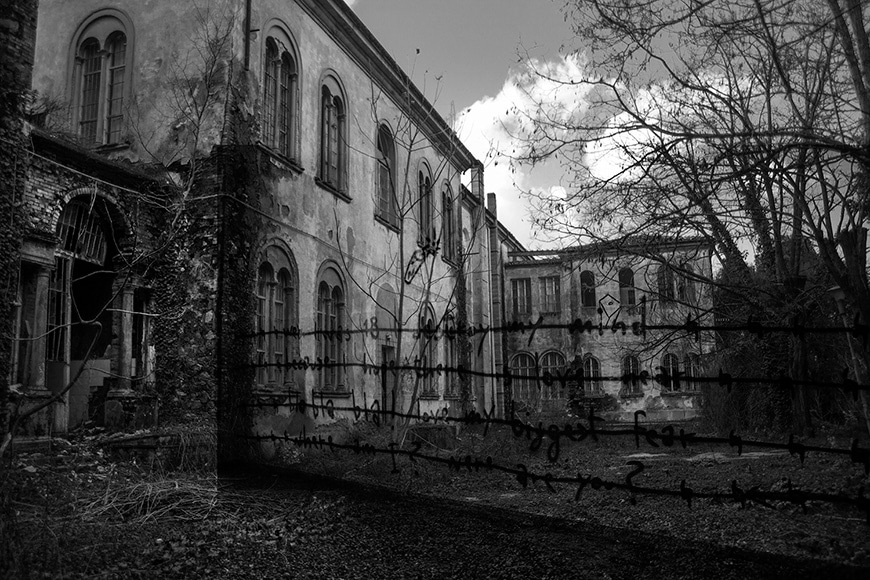
Barb Wire Words, Dreams’ Jail © Ana Mireles, courtesy of the artist.
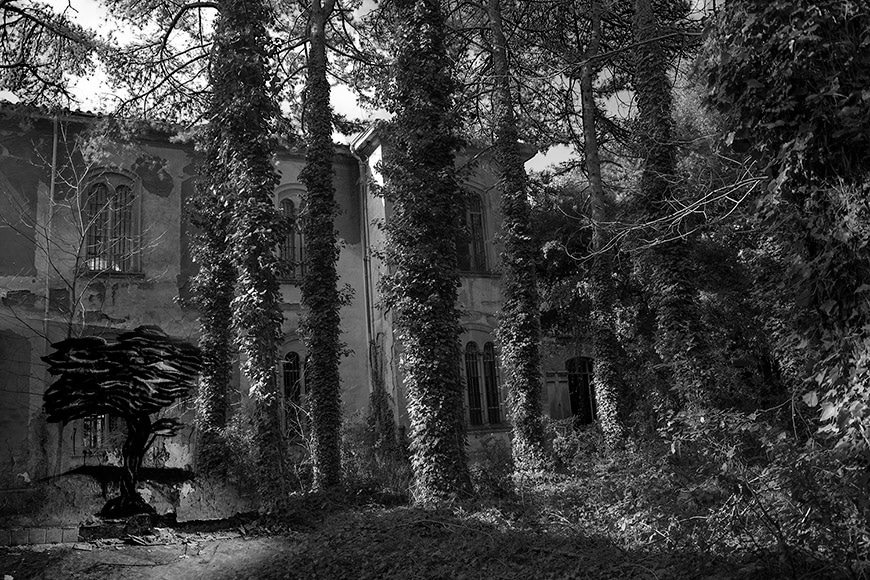
Your Reality – My Reality, Dreams’ Jail © Ana Mireles, courtesy of the artist.
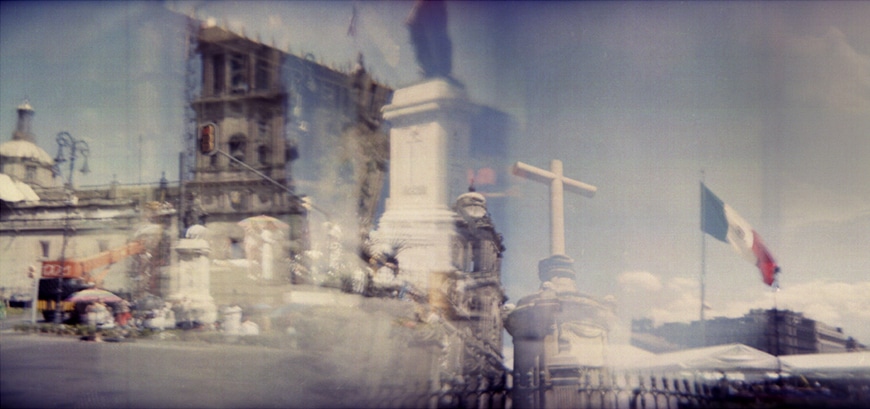
State and Religion, Synapses © Ana Mireles, courtesy of the artist.
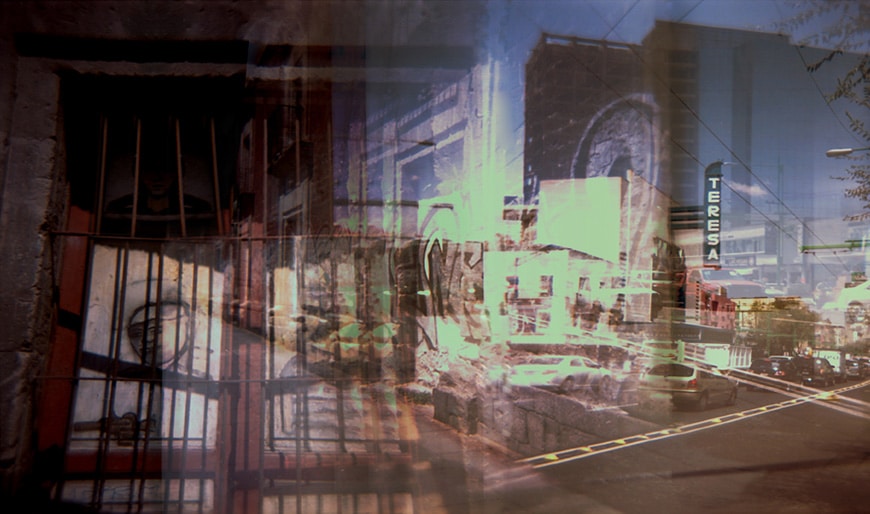
Teresa, Synapses © Ana Mireles, courtesy of the artist.
13 Famous Fine Art Photographers
If you’re looking for further inspiration, here are some of the greatest names that have made it into fine art photography history.
- Cindy Sherman – American artist that works mainly doing self-portraits. With them, she explores the construction of contemporary identity and reflects on topics like gender roles.
- Hengki Koentjoro – Indonesian photographer who studied in the United States. He makes landscape fine art photography inspired by zen philosophy and “finds solace in the monochromatic realm”.
- Hilla and Bernard Becher – The German couple who turned architecture photography into fine art. They documented industrial structures in a rigorous manner that has influenced all the generations that have come after them.
- Alfred Stieglitz – His fine art photographs, his gallery where he exhibited Avant-guard artists and his work as an editor in Camera Notes were crucial to establishing photography as an art form. He formed the Photo-Secession group with other photographers who believe in the aesthetic potential of photography.
- Tina Modotti – Italian born but a citizen of the world. Her most significant work is in documentary photography during the post-revolutionary war in Mexico.
- Irving Penn – Mostly known for his fashion photography and fine art portraiture. Despite the fact that they aren’t as famous, his still life images are also examples of fine art photos.
- Peter Lik – Australian landscape photographer who has taken the media into the art world. In 2018, he sold his photograph Phantom for $6.5 million to a private collector.
- Andreas Gursky – His favorite subject matter is repetition, and he captures it through his work in architecture and landscape photography.
- Wolfgang Tillmans – His body of work covers a wide range of topics. He’s probably most famous for his documentary photography. Personally, I find his exploration of photography as a medium to be his most extraordinary work.
- Chema Madoz – Spanish photographer. His fine art photography work consists of visual metaphors done with still life.
- Elliott Erwitt – He is a member of Magnum Photos. His work is done through the absurd reality that forms everyday life.
- Rob Woodcox – His work includes conceptual portrait and fashion photography. He lives between Mexico and the US. He “strives to capture fragments of a vivid life sewn by threads of reality”.
- Nobuyoshi Araki – Best known as Araki. His fine art portraits of Kinbaku, a Japanese bondage technique, are his most famous series. However, his artwork goes way beyond these images. One example is the project 2THESKY, where he reflects on the relationship between photography and reality.
For other famous photographers, check out our guide.
Fine Art Photography FAQs
What is the difference between fine art prints and reproductions?
Fine art prints are revised, authorized and often signed by the author. They are also numbered as they are normally limited editions. On the other hand, reproductions are copies of the original sold in large quantities and at small prices.
How much money do fine art photographers make?
The art market is extremely complex, and it isn’t easy to calculate an average. Some photographers struggle to make a living out of their photographs, while others sell their works for millions of dollars.
What is the best camera for fine art photography?
Fine art photography is more about the content than the gear, so you can use any camera and do wonderful work. However, higher resolutions work better because you’ll have more details, and you’ll be able to print the photos in bigger formats.
Final Words
I hope you’re feeling inspired and ready to make some amazing work. Remember that fine art photography is an outlet for who you are and how you see the world.
However, it does take time and practice to become a fine art photographer. So, don’t just wait for the muse to visit you, go out and find it yourself.
Got any questions or comments? Leave them below and join the discussion.

Check out these 8 essential tools to help you succeed as a professional photographer.
Includes limited-time discounts.





